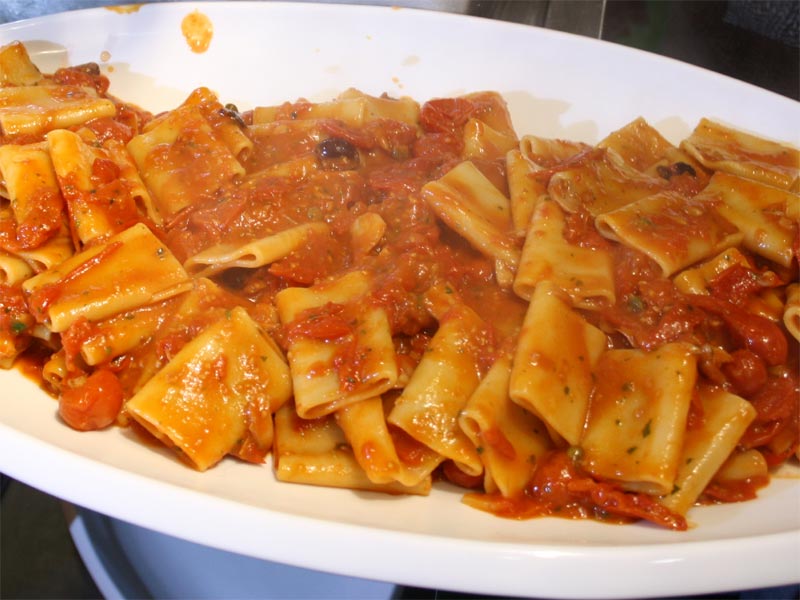Pasta
History
The tradition of pasta production in Naples and province dates back to the last decades of the 19th century, period in which a pasta production district was created in the heart of the area of Vesuvius.
At the end of the 19th century, there were 213 pasta factories in the province of Naples, mainly located in Torre Annunziata and in the adjacent Municipalities. Without a doubt for reasons linked to sea trade, Torre Annunziata became one of the most important trading centers of the period, absorbing in the pasta production sector all the local manpower and part of the manpower of the surroundings.
The coming of mechanization in the production processes of this field, in particular in the drying processes, led to a loss of competitiveness deriving from the climatic conditions of the area, essential for the drying process carried out through natural ventilation.
However, since big industries did not gain ground in the field, the development of the current "pasta-makers" firms was favored. Heirs of the past development, their products are characterized by natural and typical features.
The production of the pasta factories of Vesuvius has known ups and downs, but has without a doubt maintained a know-how that represents the specific feature of the local pasta.
Lately, pasta factories with quality productions were born in the Municipalities of Vesuvio National Park. Pasta-makers come from Torre Annunziata, processing and drying methods are the features that have made pasta famous all over the world.
Production Area
Torre Annunzaita, Boscoreale.
Description
As far as the production method is concerned, the first stage is represented by making a dough out of durum wheat (product obtained from the first grinding of wheat) with hot water. When it is smooth, the dough is drawn during a stage called "trafilatura". During this stage, it is possible to give pasta any shape you want, pressing it and making it go through metal slabs with holes. Of course, the shape of the holes corresponds to the pasta shape you want to obtain.
Then the pasta is dried so that it can reach the humidity level established by the law (max 12.50%). The drying process, that once was practiced outdoor, is carried out today in more or less large and well-aired premises, where hot and dry air artificially circulates.
Pasta is good if it "holds up to cooking": this feature is linked to the quantity of gluten contained in the pasta.









